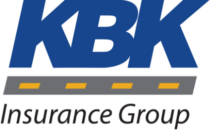6 key steps to create a superior insurance-buying process for nonprofit clients

Insurance can be a glaring blind spot for leaders and, absent adequate counsel, can result in some poor decisions
By Chris Hale
Whether you’re a newer insurance agent or you’ve been in the business for many years, you know that insurance is not as easy to understand for those outside the industry. Insurance can be a glaring blind spot for leaders and lead to some poor decisions or lack of serious consideration. That is, unless they have a proactive insurance agent and risk management professional who can guide them through the process and help make it more seamless.
Insurance can be a glaring blind spot for leaders…unless they have a proactive insurance agent and risk management professional who can guide them…
At Care Providers Insurance Services (CPS), we’ve worked side-by-side with agents and nonprofit leaders to streamline the quoting and purchasing process and deliver specialized, comprehensive insurance programs for more than 25 years. Our goal has always been to help agents and brokers deliver best-in-class policies that meet their clients’ unique needs and risks, so you can continue to deliver value and build up a profitable book of business. Based on our experience, there are six key steps and considerations that agents can implement to deliver a smoother insurance-buying process and better outcomes for their clients.
1. Ask about their pain points first.
Are your clients frustrated by a claims review process that takes too long? Or maybe they’re not getting the proper amount of loss control they need? Whatever challenges they’re facing, it’s important to give your current or prospective clients the window of opportunity from the get-go to describe them in detail. By having this insight into their challenges early on, you’ll be better positioned to form solutions to address them in advance and, simultaneously, build trust with your client.
2. Inquire about their budget early.
Asking “what’s your budget?” can cause both sides of the relationship to break into a sweat but knowing your client’s budget in advance of doing the investigative work on your end helps you accurately develop the scope of your work with them and manage expectations on results. Most clients are tempted to keep these details under wraps, but it’s important to remind them that doing so doesn’t mean they will end up overpaying. Instead, it will allow the two of you to work smarter, not harder, within their limits and maximize their budget and forgo the unnecessary back and forth.
3. Know who you’re speaking with.
When discussing available budget for a project, check that you’re speaking with the right person—someone who is able to make the decision when it comes to signing the dotted line of the future policy. The first person you speak with may not be the final decision maker, but it doesn’t mean this person isn’t valuable to the conversation. They may be an influencer who sways the key decision maker. Whoever you speak with at the prospective client’s company, acknowledge and understand their role, and build a relationship with them. Make that person feel as valued as the final decision maker if he or she is not. One way to do this is by asking, “Along with yourself, who else would be involved in approving a policy?” and ask about the opportunity to meet them as well.
4. Communicate the benefits of being the early bird.
In today’s world of instant satisfaction, it can be easy for clients to forget that proper underwriting takes time and should be factored into their overall timelines. Simply put, if clients send you their insurance application and details enough time in advance of the desired coverage date, the underwriter has a chance to review it and pose critical follow-up questions. The extra lead time also gives your clients the opportunity to understand the features of the insurance policy, solicit competing quotes if necessary, and compare competing terms.
5. Investigate past claims and preventative measures.
While some applications don’t require information about past claims, you can proactively streamline the process by asking your clients for these details on top of any preventative measures that have been put into place related to the claim(s). Some things to keep an eye on in particular include business continuity plans, staff training programs, operational changes, property improvements—all of these will show you the client’s proactive approach to risk management and give insurance carriers comfort in taking on the risk. All in all, the more detail you can get, the better so that client claims can be evaluated correctly.
6. Keep the doors of communications open.
It goes without saying that one of the most critical factors in any business relationship is effective communication. You want to be available to connect with your clients whenever they have a question or concern because, as mentioned earlier, insurance can be daunting and confusing—so there are bound to be plenty. Making it possible for them to reach out to you at any time on their schedule is definitely a plus, but at least responding to emails and messages promptly is one the best—and easiest—ways to ensure that your business remains successful. Providing them the option to send you a message around the clock is also much easier than having them wait until regular business hours to do so. That’s not to say that you must respond immediately, but having the option to contact you the moment a question pops into their head will give your clients peace of mind.
With a rapidly changing insurance landscape and shifting client expectations—not to mention an ongoing global health crisis—striving for a superior experience for your clients is more important than ever. Agents who gather the right information and act on it quickly will hold the power to create the most relevant and rewarding insurance client experience.









